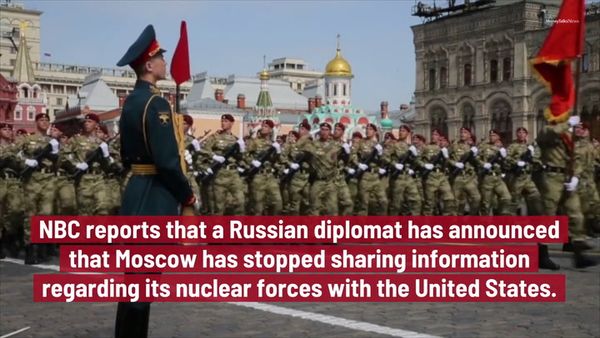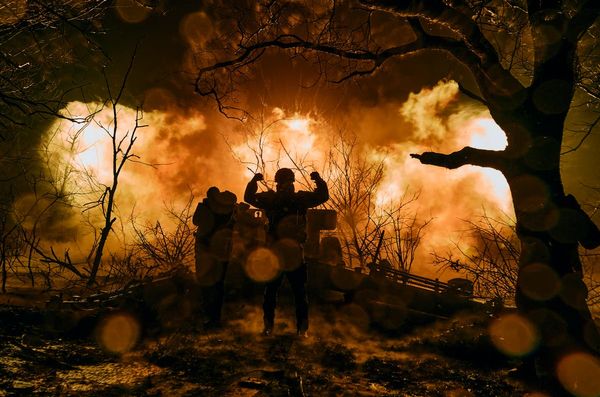
Ukraine has been preparing to launch a spring counteroffensive to recapture territory seized by Russians and is hoping to repeat the success of its counterattacks last September. Despite the supply of Western arms, including battle tanks, Ukrainian forces will have to change their tactics if they hope to achieve a breakthrough, according to historian and retired army officer Michel Goya.
Ukraine has made no secret of its plans to launch a counteroffensive in the spring and reclaim land occupied by Russian forces since Moscow launched its invasion in February 2022. The Ukrainian army has already successfully carried out similar attacks last September, driving back Russian forces in Kharkiv and Kherson provinces.
>> Key battles in the Ukraine war: From Kyiv’s stand to the Kharkiv counterattack
Ukraine has received several widely publicised deliveries of military equipment from its Western backers these past days, including armoured vehicles from the US, the UK and Germany. The military hardware, however, “is no guarantee of a significant victory”, says historian and former French Marines colonel Michel Goya.
He discussed Ukraine’s upcoming counter-offensive on the sidelines of a conference organised this week by the Jean Jaurès Foundation, a Paris-based think tank.
FRANCE 24: How does Ukraine plan to carry out its counteroffensive this spring?
Michel Goya: The Ukrainians are obliged to launch major offensives; they cannot afford to chip away at enemy defences like the Russians. Kyiv must secure significant wins as soon as possible, in order to liberate as much territory as it can, while inflicting the heaviest damage possible on Russian forces.
To accomplish this, the Ukrainian army will have to break through Russian lines and disrupt their set-up. They need victories like those in September in the provinces of Kharkiv and Kherson. Right now, Ukrainian forces need to advance up to Melitopol (in the southeastern Zaporizhzhia province) and Starobilsk (in the eastern Luhansk province) and inflict maximum damage on the enemy.
They will need to concentrate their resources and forces – at least a dozen brigades – on a specific area. When their momentum stalls, they will need to renew their attacks in order to secure three to four victories like those in September. A single counteroffensive will not be enough to reach the strategic goal of liberating all territories [under Russian occupation].
F24: Are the weapons supplied by the West enough to help Ukraine reach its aims?
MG: It’s not all down to the military equipment. The tanks, armoured vehicles and mobile artillery [supplied by the West] will allow Kyiv to build up coherent and solid combat units, which could spearhead the offensive. But current supplies will only allow Ukrainian forces to build up at most three to four brigades, which is not enough to secure a decisive victory. Kyiv will need at least a dozen brigades for its offensive to be effective – as was the case last September. Moreover, Russian lines are now probably stronger than they were back then, which means the Ukrainians will need to double down.
Aside from the number of troops, what also matters is their organisation; it is very complicated to coordinate different units that require specific know-how and competent leadership. Are Ukrainian forces capable of reaching this level of coordination? That’s the real question.
F24: What impact could this offensive have on the outcome of the war?
MG: There are two potential outcomes in the event of a Ukrainian offensive. Either it fails, which would lead to a frozen conflict in which Ukrainian forces are incapable of breaking through Russian defences, or it succeeds, which would destabilise the current balance on the ground.
Russia cannot remain idle if Ukrainian forces advance in Zaporizhzhia or Luhansk provinces, especially since Kyiv’s forces would come close to sensitive areas such as Crimea and the separatist republics of the Donbas. Ukraine’s counterattack can only lead to a robust response from Russia.
This would require a new mobilisation of military personnel, such as the one last September, when President Vladimir Putin announced a partial mobilisation of military reservists.
The Pandora’s box has been opened; nothing can prevent Moscow from mobilising 300,000 or 600,000 more men, or even one million. Russia has crossed the line and there are no more limits – except practical ones, since it is impossible to transform civilians into competent troops overnight, without adequate training.
F24: Why are multiple Ukrainian counterattacks necessary?
MG: We could imagine a scenario in which Ukrainian forces achieve a breakthrough in Zaporizhzhia province that in turn triggers a broader collapse of Russian lines across the country. From that point on, everything would become easier for Ukraine, from a military point of view, and it might even win back the Donbas and Crimea.
However, this remains an unlikely scenario to me.
The Ukrainian offensive would necessarily have to stop at some point. It’s impossible to advance continuously along the front line for hundreds of kilometres. They would need provisions, logistics and abundant manpower – enough to replace the soldiers exhausted by combat. When Ukrainian forces advanced in Kharkiv province in September, the Russians later managed to stop them in Luhansk province.
It is quite likely that the Ukrainian army will see some success, but not strategic victories that would enable it to reclaim all its territories. They will therefore have to multiply their attacks, bearing in mind that the Russians still have several cards up their sleeves, including the threat of a nuclear escalation. There is still a risk of nuclear blackmail – and indeed of such weapons being used, though this would come at a huge political cost for Moscow.
This article was translated from the original in French.










